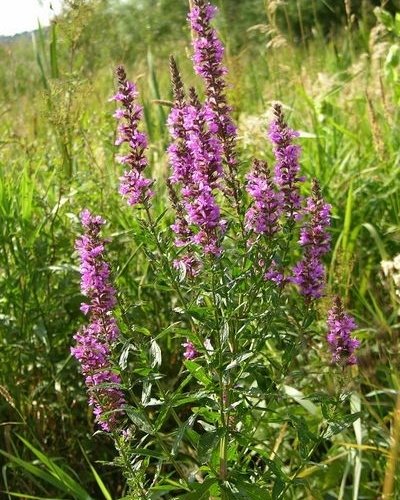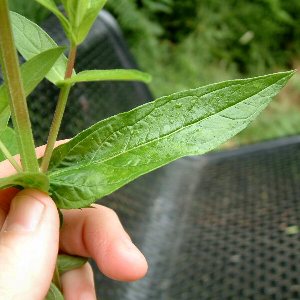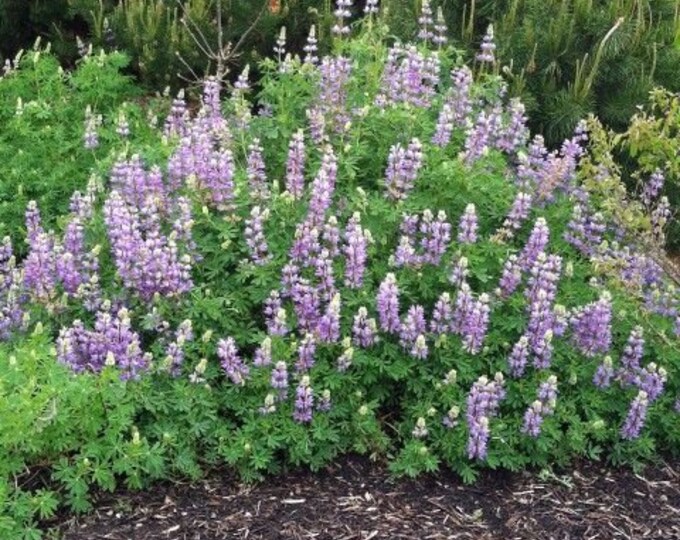Introduced species: Purple Loosestrife (Lythrum salicaria)
Characteristics
Purple loosestrife is an herbaceous perennial, native to Europe, Asia, and northwest Africa, typically growing 1-1.5 m (3-5 feet) tall. The plant is easily distinguished at this time of year by its showy clusters of purple flowers, which last through the summer. Many erect stems, square in cross-section, emerge from a woody root mass. The leaves are opposite or in whorls of three, 4-10 cm (1.5-4 inches) long and 1-2 cm (½ to ¾ inch wide. Very large quantities of small seeds are contained in a 1.5-inch capsule. Purple loosestrife is found mostly in and around freshwater wetland areas, such as ponds and marshes, as well as along stream banks.
Spread
Purple loosestrife reproduces predominantly through its large numbers of seeds; each seed capsule contains 120 seeds on average, and a single plant may produce up to 900 capsules. These seeds are highly viable, and may be dispersed by wind, water, or animal activity. Infestations can thus spread quickly in the wetland areas the plant frequently inhabits, particularly if the area has been disturbed.
Control
Small infestations may be pulled by hand (being sure to remove pulled stems and all of the rootstock, both of which can re-sprout), ideally before they set seed. Large infestations of purple loosestrife are quite difficult to control. Several insect species have shown promise as biocontrol agents; aquatic formulations of some herbicides are effective on purple loosestrife, but will also kill other vegetation if not applied carefully.
Native replacement
Streambank lupine (Lupinus rivularis) is an easy-to-grow native plant with purple flowers that will do well in many of the habitats that purple loosestrife tends to infest. Bonus: like all lupines, it’s a nitrogen-fixer, so your soil benefits, too!



